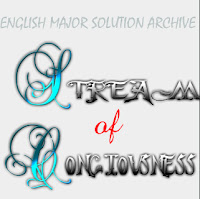 |
| Norman Conquest |
William the conquerer of the conquest of 1066 was a landmark event in many respects. The pressures of military control over a people ready to challenge the authority required immense fact and diplomatic acumen. William knew that he did not have adequate knowledge about local habits and customs moreover the first priority was settlement and control over the people who offered resistance under the English King. The Battle of Hastings went in William's favour, but the matter of managing the resources was his new dominion. Indeed the Norman Conquest of 1066 provided a convenient landmark for the history of England and brought about radical changes in all matters of English life and mind. It did not merely affect the political character of the country but also deeply influenced and shaped remarkably English literature as well as the language.
The Norman Conquest imposed a French speaking ruling on England and with their laws and administrations. The normans imported into England a France literary ideals and cultures. Latin and French were the only recognised languages in the normal court. Consequently, the English language was ignored in English literature remain silent. In fact the development of English literature was arrested for merely a hundred and fifty years after the conquest.
When the English literature reappeared after a laps of more than a century,it was found different, significantly influenced by French literature. The literary ideals of the French however was immensely different from that of the Anglo - Saxon which was rather grave, reflective and pensive. Bit French Literature was full of liveliness and was rich in wit and humour.
The Norman Conquest contributed to the expansion of English culture and literature. First,there was the enrichment of English Language and Literature by the direct cultural and literary influence of Rome which the Norman had brought. Secondly,there was the immense enlargement of Scholarship and learning as a result of the contact with the scholars of Europe. Thirdly,literary themes and expressions were greatly multiplied by the Norman inclusion of French themes and modes of expression.
The English writers ,under the French impact,attempted every form of literature known to the continent - Romances, Story telling in verse,
Chronicles, Allegories, homilies and legends. They sought to imitate the best that was in the French works - their clarity and logical reasonings, their variety of color and shade, their fullness of details and Romantic interest in live and women. In English poetry, the rhymed verse of French replaced the Anglo-Saxon alliterative tradition.
There had grown a kind of Anglo Norman literature which consisted of Chronicles in rhymes. The revival of English literature was heard through religious works. The earliest of those religious works was
poemamorate or Moral '
Ode' which was written about 1170 Ad. Among those religious works ,there was a fine prose piece , '
Ancene Riwle' which might be taken as the best example of the prose of the time.
The life of Saint Brendon and
The Life of Saint Doustan were the two other popular works of the Age.
But the most remarkable work was 'The Ows And The Nightingale " written about 1280 AD by Seullar. Founded on the symbolic poetry of France, it was an Allegory of youth and wisdom. All those inspiration from French Literature made a conspicuous deviation from the old literature of the Anglo-Saxon and demonstrated the extend of the impact of Norman Conquest on English Life, Literature and Language.
But the awareness of the old Anglo-Saxon root was never lost and ultimately the English language ousted French but it was altogether a much changed language under the French influence after Norman Conquest.














